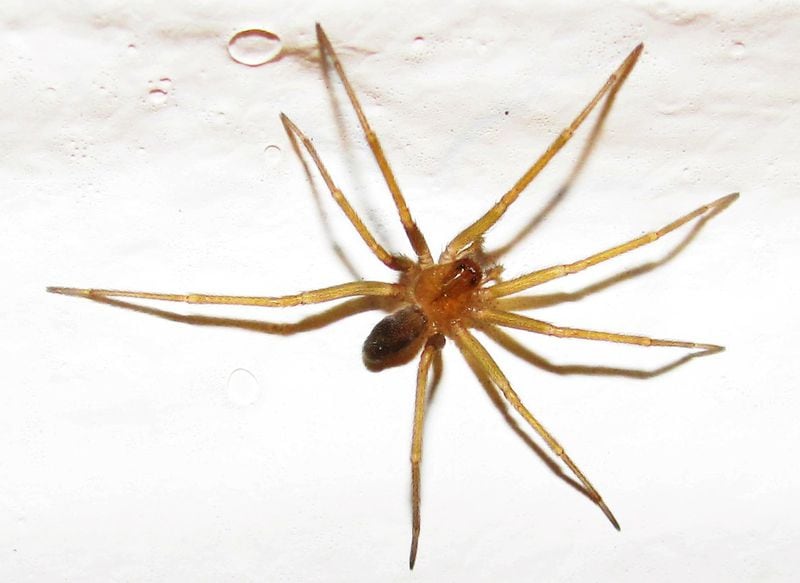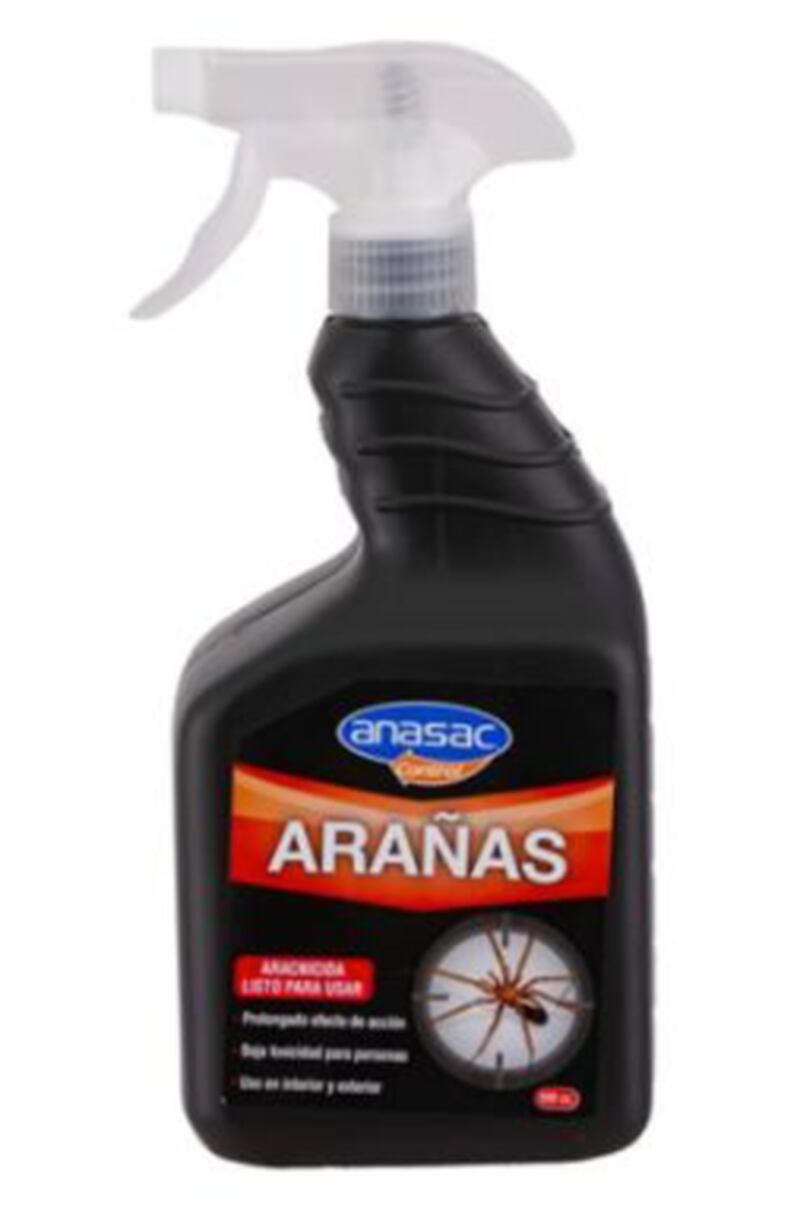Nearly 450 Chileans are bitten by Loxosceles laeta each year, and four end up dying from its poison. Two entomologists explain how to prevent them from settling in our homes and give instructions for treatment after an attack.
The corner spider –loxocele laeta, from its scientific name, is one of the small and big threats that can haunt our homes. Its powerful venom places it at the top of the ranking of the most feared arachnids, not only in Chile but also in various regions of the world where it is found.
“It is a species native to various parts of South America,” reports Constanza Schapheer, entomologist and science communicator, “and it is complicated mainly because it has a poison that it transmits through its bite”.
In our country, its main field of action is in the northern and central areas, from Arica to Chillán. “The vast majority of accidents happen there,” says entomologist Alfredo Ugarte, “but there are also cases in towns as far south as Punta Arenas.” This species usually lives in the countryside, but it can also be present in homes and cities, making it a constant danger.
“Each year, in the Metropolitan Region alone, around 200 people are bitten, the age group from 15 to 44 being the most affected”, declared Rosa Oyarce in 2020, when she was regional Minister of Health. In one paper from the University of Chile point out that its bite is very frequent, with “450 cases per year and a lethality of up to four cases per year”.
knowing the loxocele laeta
The corner spider, unlike other invertebrates such as butterflies or flies, develops through a process called gradual metamorphosis. In other words, “a little spider hatches from an egg and grows little by little, like humans, without any other intermediate steps,” says Ugarte.
The fangs of this arachnid are proportional to its body, so the bigger the spider, the more dangerous it will be. “If his fangs are big, that means his venom can infect a deeper place, which makes a big difference. The venom gland is also bigger as it grows,” he adds.
According to its size, it is one of the most dangerous animals in the world, since the amount of poison it must inject to cause death is very small. According to the entomologist, studies indicate that the venom of the corner spider is a hundred times more intense than that of the rattlesnake.

Of course, spiders don’t bite people for fun. “They don’t do it for fun,” adds Ugarte. To them, we are “giant monsters”, which they cannot even fully see. “The fact that we’re approaching them is already freaking them out, so they’re trying to pop up and disappear,” he says. The bite is therefore a defense mechanism that they only use “as a last resort when they feel attacked”.
Why is the corner spider bite dangerous?
Nook spider venom can cause two reactions to be aware of. “In general, bites happen accidentally: if we sit on it or press on it, it feels attacked and defends itself”, explains Alfredo Labarca, emergency of Help.
When bitten, this action “is very painful and its main characteristic is that it forms a purplish-colored lesion, probably with a slightly lighter and more gray edge”, he adds.

The pathology it causes is identified by doctors as loxoscelism, which can be cutaneous or visceral. The vast majority of cases occur first, where “what occurs is necrosis, that is, death of the most superficial tissues,” as Schapheer describes it. “If we leave him alone and don’t treat him, it can get complicated.”
Regarding visceral loxoscelism, it occurs when the poison “enters the bloodstream,” says Ugarte. “That’s when there is a high probability of death, because it starts to damage the liver, pancreas, kidneys and multi-organ failure starts.”
How to identify the corner spider?
In other geographical areas, this arachnid is known as the violinist spider and it is precisely because “it has a violin-shaped design on the cephalothorax”, explains Ugarte. To the untrained eye, yes, it will be difficult to identify this feature in such a short time and from some distance.
Faced with this, Ugarte offers to look at his speed. “If it’s a fast-moving spider, kill it,” he suggests. It is, according to him, the main sign of distinction with the tiger spider, another arachnid with which it is often confused.
“I would say that nine out of ten spiders killed in Chile are tigers, and I hope one of them is from the area. In the end, it’s bad, because you end up killing the best insecticide you can have at home,” he points out. Indeed, tiger spiders are predators of corner spiders. How do you know it’s a tiger? On the contrary: “he moves slowly and is clumsy”, explains Ugarte.
The coloring of the corner spiders, yes, can be diverse, because if they are raised in dry environments, such as the attic of a house in northern Chile, they tend to be yellow or very light brown. But if its habitat is a more humid space, it may have a darker color. It is therefore preferable not to try to identify them by their color but by their movements.
Although the loxocele laeta It is a native species and lives in natural spaces, it can also settle in a house, especially in corners that are not cleaned regularly or that are very hidden. Cleaning unusual places at least once a month, if possible fortnightly, is an effective way to fight against its presence.
How to delete it
“It is not recommended to eliminate corner spiders, since they are a native animal that participates in the Chilean ecosystem”, explains Constanza Schapheer. But if we find one inside the house, it is better to do so “because they represent a risk and a potential danger”, completes Ugarte. “It is a basic law of survival to protect your territory.”
Aerosols (or spider repellents)
No insecticide is effective in eliminating spiders, because as the name suggests, they are products that eliminate insects. If you opt for a spray, it must contain “highly toxic chemical elements and a very long action time”, explains Ugarte. It must be taken into account that spiders have a different circulatory or respiratory system than insects.
“It’s like having a weapon at home: it should only be used if a spider is seen” with the aforementioned characteristics. It must be applied directly and “not left or right”, since since it is a chemical product, care must be taken not to generate intoxication or allergies with the product.
Anasac arachnidicide ready to use 500 ml

by an impact
“The other way to eliminate it is to take a fly swatter or a shoe and smash it directly,” says Ugarte. Of course, you never have to do it by hand: “you can’t hit it, leave it half hurt and the spider will bite you”. There, the main threat to your health would be yourself.
How to avoid it?
“It’s important to take steps inside the home to prevent this, and it’s all about keeping spaces clean and uncluttered,” Schapheer points out. For this, it is necessary to do periodic cleaning at home: move the furniture and vacuum the corners and places that can be a good hiding place for this arachnid.
The classic spaces where it can reside are those where clothes have long been stored, behind books, paintings, under armchairs but also under beds. The idea is that they don’t feel comfortable nesting in these places and prefer to be outside rather than inside the house.
“It should be understood that making their burrows with cobwebs requires great physical and energetic effort,” adds Ugarte. If they are constantly destroyed, “they will get bored and leave”. Besides the feather duster and the rag, he says that the vacuum cleaner is by far the best item to scare them away.
The southern regions of Chile are not immune to the presence of this spider, because “when you move furniture, you can also move spiders. Inside houses they can live even if it is 15 degrees below zero outside,” he warns.
In the event of an accident
If, despite all of the above, a person is bitten by a corner spider, “they should be kept at rest, without agitation, checked their temperature, and taken them to an urgent care center immediately,” says Schapheer.
“Normally, the spider dies after being bitten,” says Ugarte. Something important and very useful is to search for the spider’s body before going to the hospital. “If you find even part of it, you have to put it in an envelope or a jar and also take it to the medical care center, because normally they don’t apply antidotes if the doctors are not sure that the one who but you were precisely a spider in a corner.
Another action suggested before leaving the house is to put ice on the area of the bite as soon as it occurs, “because it prevents the poison or toxin from progressing quickly”, explains emergency physician Labarca.
“Taking the time of the accident is also vital, because the antidote that exists against the corner spider is effective provided it is used between 6 and 8 hours after the bite,” says Ugarte.
As a final recommendation, the entomologist stresses the importance of having noted the telephone number of the Poison Information Center of the Pontificia Universidad Católica, city . “It is a very useful call center, which is used to ask questions not only about corner spiders, but also about other arachnids or insects, as well as poisoning due to ingestion of chemicals or toxic.” This is an open and free line that guides every day of the year.
*Product prices are effective as of September 5, 2023. Values and availability subject to change.
Source: Latercera
I am David Jack and I have been working in the news industry for over 10 years. As an experienced journalist, I specialize in covering sports news with a focus on golf. My articles have been published by some of the most respected publications in the world including The New York Times and Sports Illustrated.


